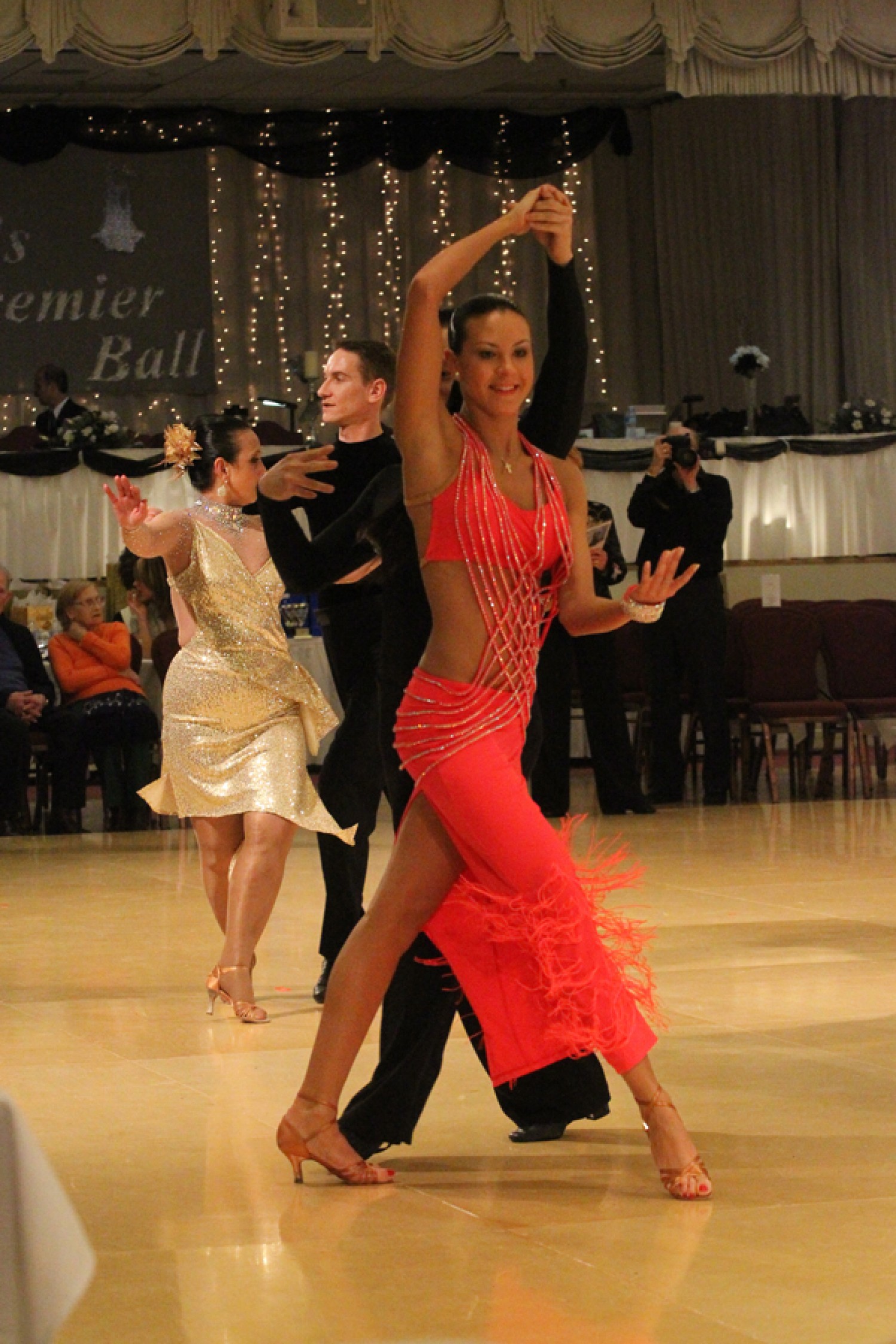The Basics of Cuban Motion (Latin Hip Action)

IMPORTANT: The following article is for those who dance American Ballroom. If you’re looking for International hip motion, maybe this will help.
It can get pretty frustrating when you see others using Cuban motion like they were born to do it, but when you try it, something just doesn’t feel right. Maybe you feel like your hips are tight, or you’re off balance. Maybe you can’t move your hips and maintain the rest of your technique at the same time.
A rhythm dance without Cuban motion is like a cake without icing. Your hips can convey power, romance, and sensuality, and using them is what makes a rumba look like a rumba, a salsa look like a salsa.
The good news is, Cuban motion is not some unattainable superpower – it uses very specific parts of your body in a way you can practice and master. Let’s start with a bare-bones look at what makes your hips ‘go’.
1. Toes turned out
Your hip rotations are restricted by how ‘open’ your hips are, and that openness is determined by your foot positions. You need only compare how easy it is to twist your hips with toes pointing outwards, compared to inwards. Begin building flexibility in your hips by dancing every step with your feet open about 70º. It’s okay to adjust that a bit if it’s painful however.
2. Alternating knees
Probably the most common mistake fledgling dancers make when trying Cuban motion for the first time is trying to move their hips directly, usually causing them to stick out and make the movement very awkward. Instead, focus on the knees. Try standing with feet together (toes turned out), and bending one knee while keeping the other straight, then alternate. You will create a twisting motion in your hips, like a top-loading washing machine. Don’t try to push them to go further yet, or you’ll pick up bad habits or an injury. Just rely on the knees to create a natural body movement.
3. Step on a bent knee
When we climb a flight of stairs, we step up, bending our knee, then shift our weight forward and push up, which straightens the knee, and repeat on the other side. To prepare for hip motion in your dance patterns, practice taking steps in place on a bent knee, making sure your ribcage is over the knee before you straighten it. Then, straighten that knee and bend the opposite one as you move it for your next step.
4. Practice with a basic step
Finally, it’s time to start dancing! Start with the absolute basics, making every single step with toes turned out, stepping on a bent knee, and alternating knees. Keep practicing until you can do them without sacrificing more fundamental technique, like partner connection and proper balance.
This is one way to understand Cuban motion, but it doesn’t work for everybody. If you’ve followed the suggestions above and things still aren’t working, tune in next week for a look at the common mistakes we make when learning hip movement – and how to correct them.
About the Author
Ian Crewe has been dancing ballroom for almost 20 years, and has a Licentiate in American smooth and rhythm. His passion for dance and his endless seeking for ways to reach new audiences eventually led him to blogging and the World Wide Web. Ian currently teaches at the Joy of Dance Centre, Toronto, ON, Canada.

